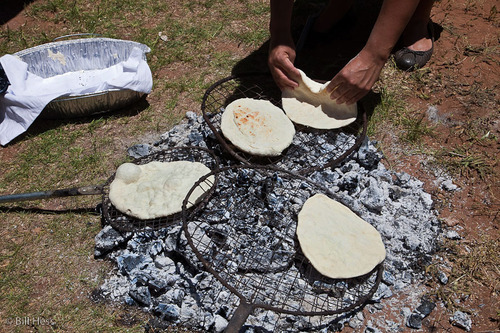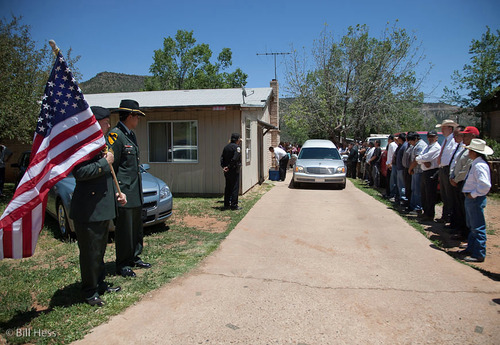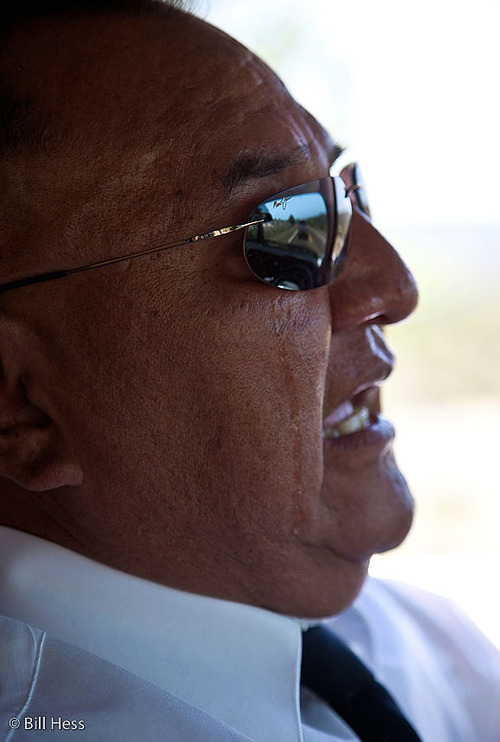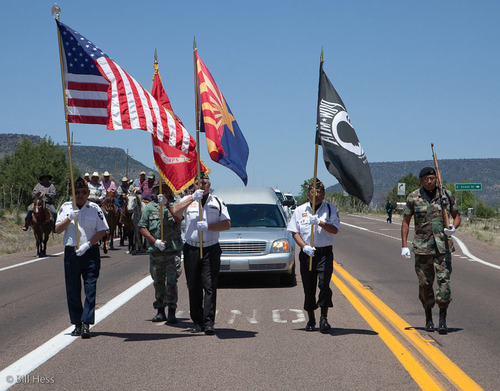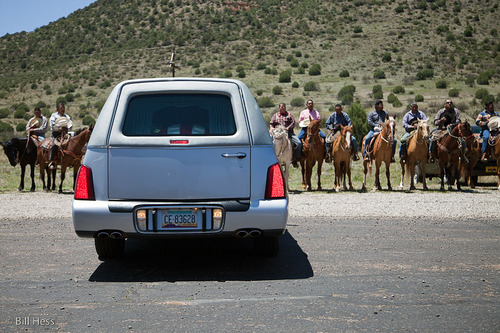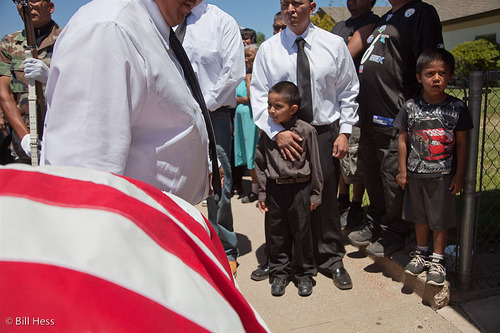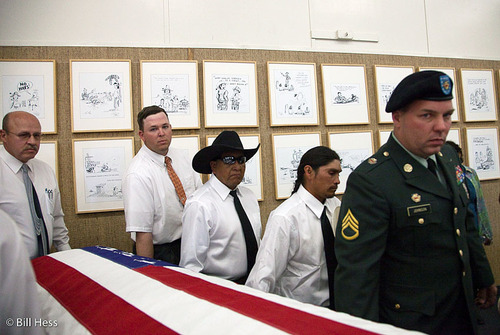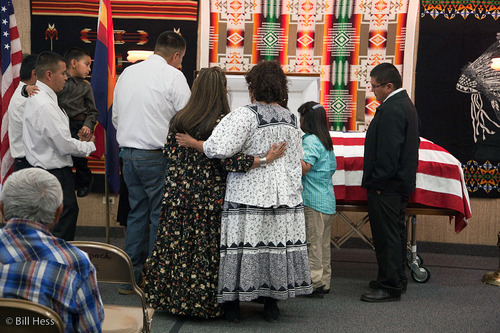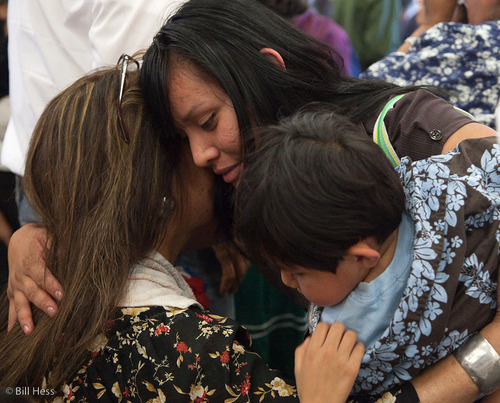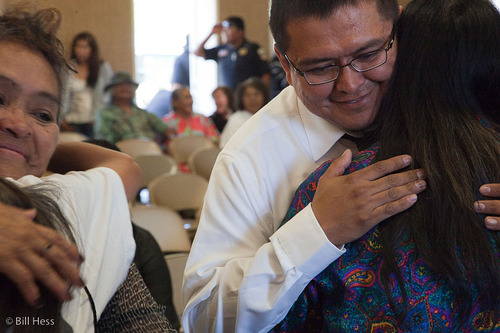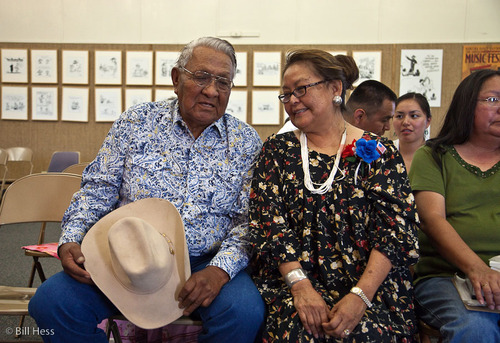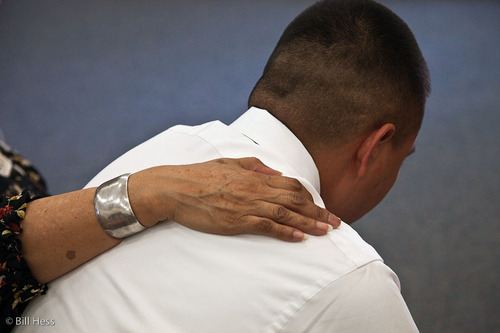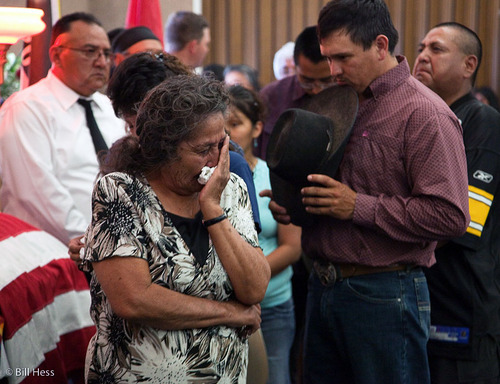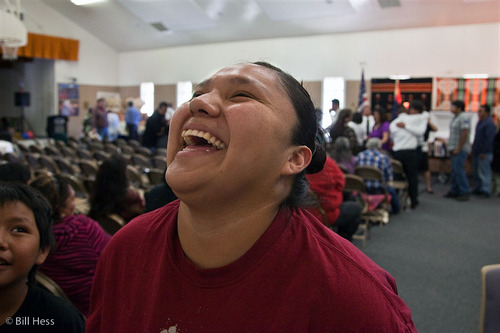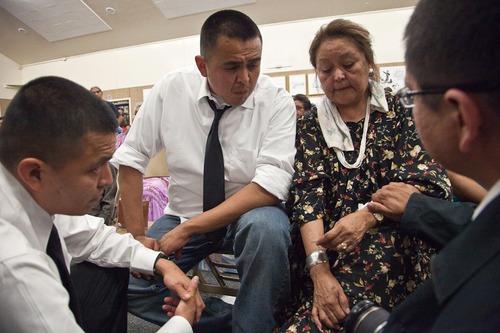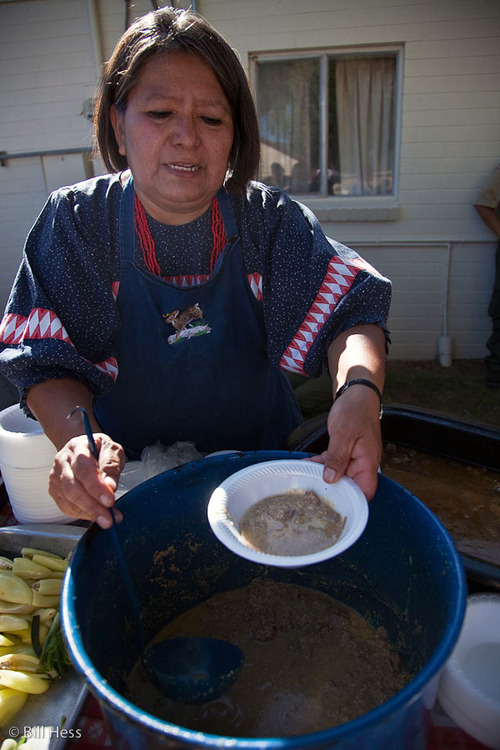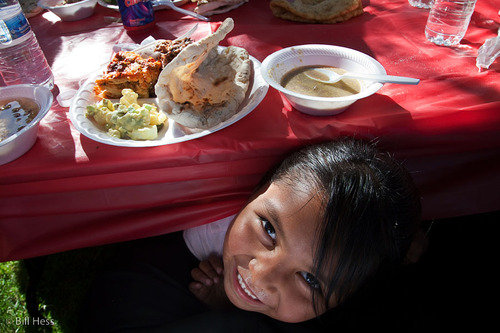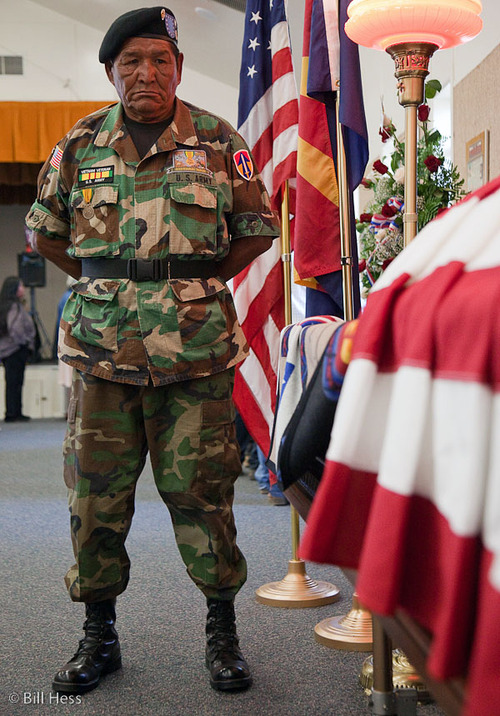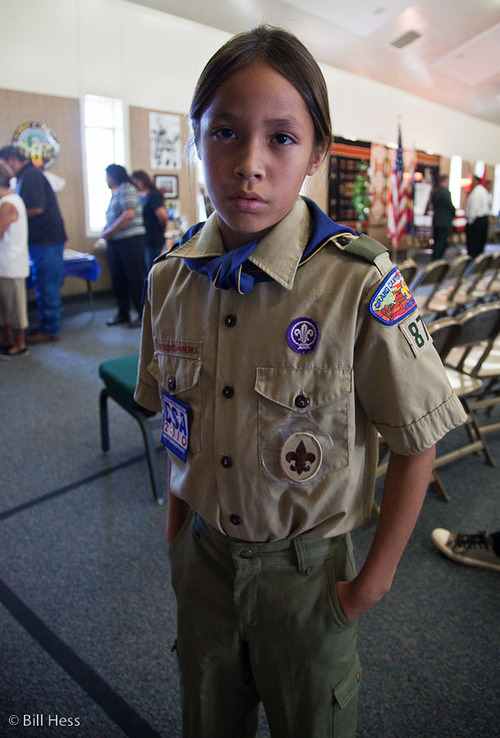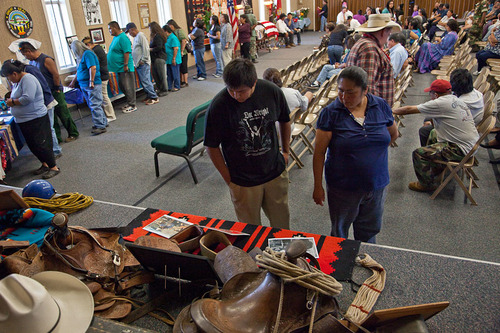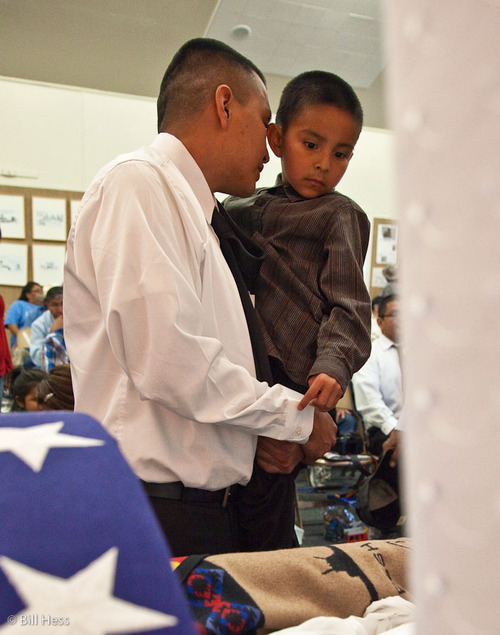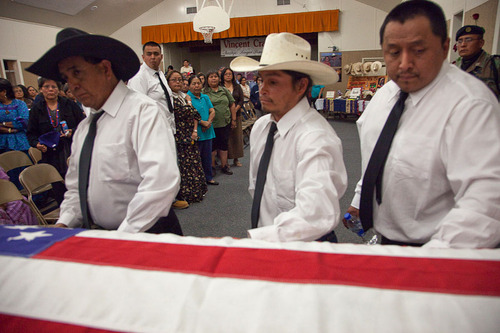The funeral of Vincent Craig, Part 3: Visitation at Fort Apache - mourners weep, but they also laugh
 Tuesday, May 25, 2010 at 12:45PM
Tuesday, May 25, 2010 at 12:45PM 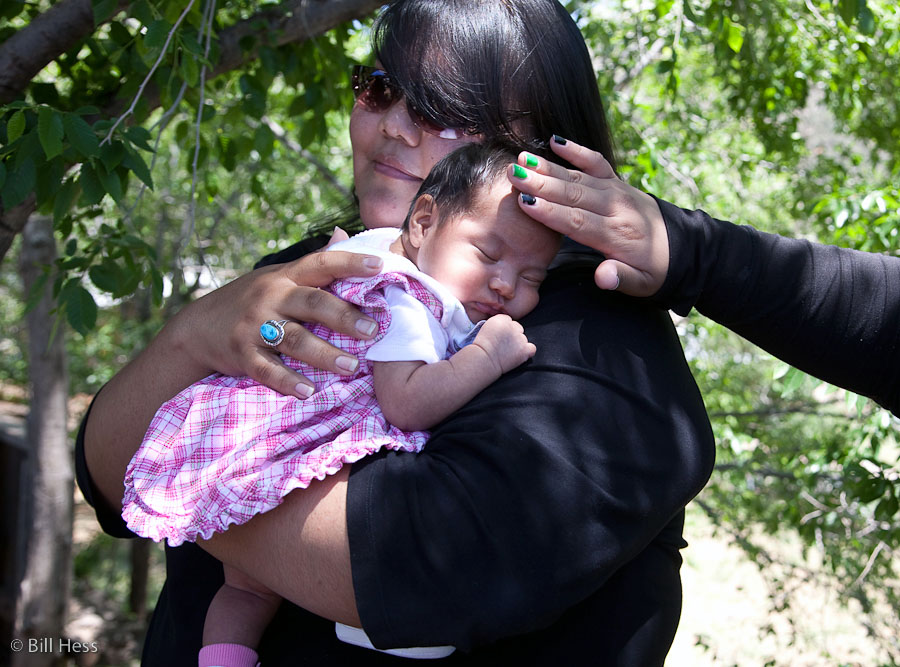
I begin my coverage of the day of Vincent's visitation in the backyard of the home where he and Mariddie raised their three sons and where their grandchildren still come to play. People had gathered here to lend comfort to each other and to the family as they waited for the hearse to bring the body of Vincent down from the mortuary in Lakeside for the viewing at Fort Apache.
Among those present was baby Naaneeya, held in the arms of her Aunt Torri Benaly DuQuesnay. In the English language, Naaneeya would be a second niece to Vincent. By Navajo reckoning, she is a granddaughter.
As they waited, women cooked break and other items over the coals of an open fire. The coals would not be discarded, but in the Apache way would be gathered and put to use the following day just before the funeral would come to its end.
After the hearse arrived, those present lined up along the driveway as the driver backed in, military representatives to the one side, pall-bearers and other civilians to the other. Other veterans, including a special honor guard of former Marines, many who had fought in Vietnam, had already gathered at the Fort Apache LDS chapel to prepare to greet Vincent there.
I rode to the chapel in the vehicle of Vincent's brother, Emerson Craig and two other pall bearers, Norman Pete and Ryan Pete, who sat in the back seat. As he drove slowly along the procession route, Emerson told us of a series of dreams that he had after his father, Bob Craig, Navajo Code Talker who fought at Iwo Jima, died.
In the earlier dreams, his father could not talk, but only gesture. In the later dreams, he let his son know that everything was good with him, he was in a good place and had bears to watch over. Among them was a special bear that he would pat on the head. He believed this to be the same bear whose life he had saved during the days of his youth.
The tear that came down his cheek was for at least two people, his father and his brother.
As the hearse drew near to the driveway to the Fort Apache chapel, an honor guard marched in front, Apache cowboys behind and to the side. A long procession of pickup trucks and cars followed.
As the hearse backed toward the chapel doors, the cowboys formed a line and removed their hats.
Vincent's second oldest son, Nephi, stood with his hand on the chest of his six-year old son, Ari, as Vincent was carried into the chapel.
We carried Vincent past his cartoons.
There were military honors, a prayer and then silence followed. Then, softly came the sound of Navajo flute, followed by harmonica and fingers plucking an acoustic guitar in a minor key. Then came the voice of Vincent Craig, singing these words, "My grandfather used to take me to the mountains in my youth and there he would tell me the stories of long ago. Between the four sacred mountains we lived in harmony but now you tell me that we've got to go, because someone drew a line..."
It was his song, Someone Drew A Line, about the forced removal of the Navajo people from their homeland to the Basque Redondo, where so many died before they were allowed to return.
As all others stepped backed to wait, Vincent's family, including wife Mariddie in the dark-patterned camp dress, his sons and a grandson, gathered beside the casket to look upon this man who had given them life and had then filled their lives with something extraordinary and special.
From that point until the closing prayer, the room would be filled with the sound of Vincent's voice, singing to his own accompaniment on guitar, flute, harmonica, mandolin, keyboard - whatever this artist of multiple talent had felt necessary to convey his message.
Comfort was brought to his wife, Mariddie, who he always called by her middle name, Ann.
Comfort was also gladly accepted by Dustinn, the eldest son of Vincent and Mariddie, and by Mariddie's sister, Charlotte.
An old friend of the family shares some good memories of Vincent with Mariddie.
In her pain, Mariddie also extended comfort - here to her son, Nephi.
Mariddie's cousin, Gretchen Ethelbah sheds some tears as she turns away from the casket. Grief was not limited to family members. As I hope I have made clear in earlier posts, those who loved Vincent for the great gifts that he had brought to them through his music, songwriting, poetry and cartoons number in the legions.
Vincent Craig was one of the most beloved individuals in all of Indian Country.
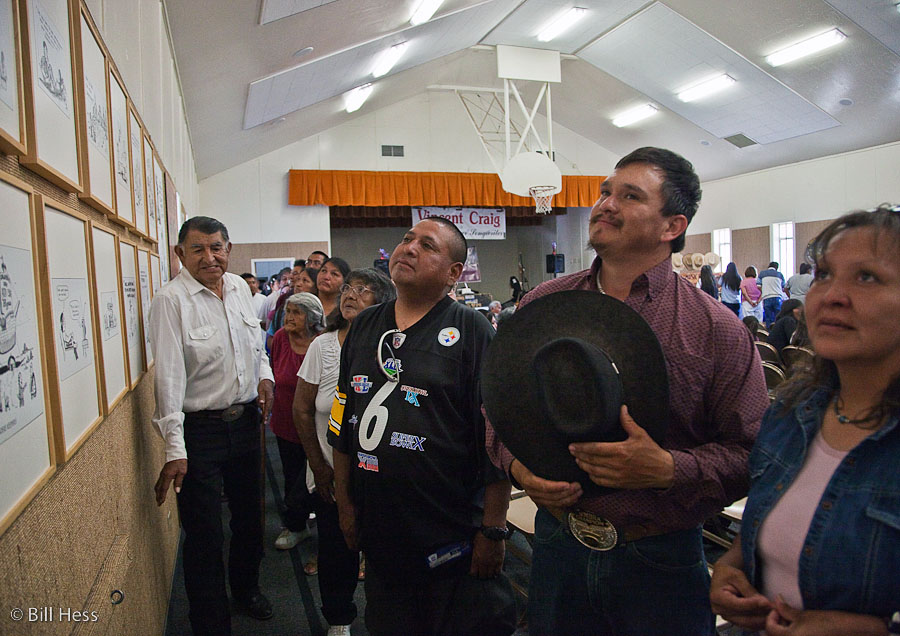
Despite the solemnity of the event, those who had shed tears for Vincent when they stood beside his open casket smiled as they filed past his cartoons.
And sometimes, they laughed out loud. Of all the pictures I have taken since I left Alaska, if I could somehow show but one to Vincent Craig, this would be it. And I know what he would do. He would laugh - loud and hard.
I grew up hearing that a comic should never laugh at his own jokes. This did not apply to Vincent. He laughed. He always laughed.
Mariddie and her sons Nephi, Shiloh and Dustinn. They continue to share the love they had with husband and father with each other.
During the lunch, Phoebe Nez, a good friend of the family, served acorn stew.
As I was eating my acorn stew, a little head suddenly popped up between me and the table. It was this girl, whose name I do not know, but she stayed close to me throughout lunch, sometimes darting laughingly off, but only to quickly return in surprise fashion.
Members of the Bylas Marine Veterans Honor Guard from the San Carlos Apache Reservation took their turns standing guard at the head of the casket.
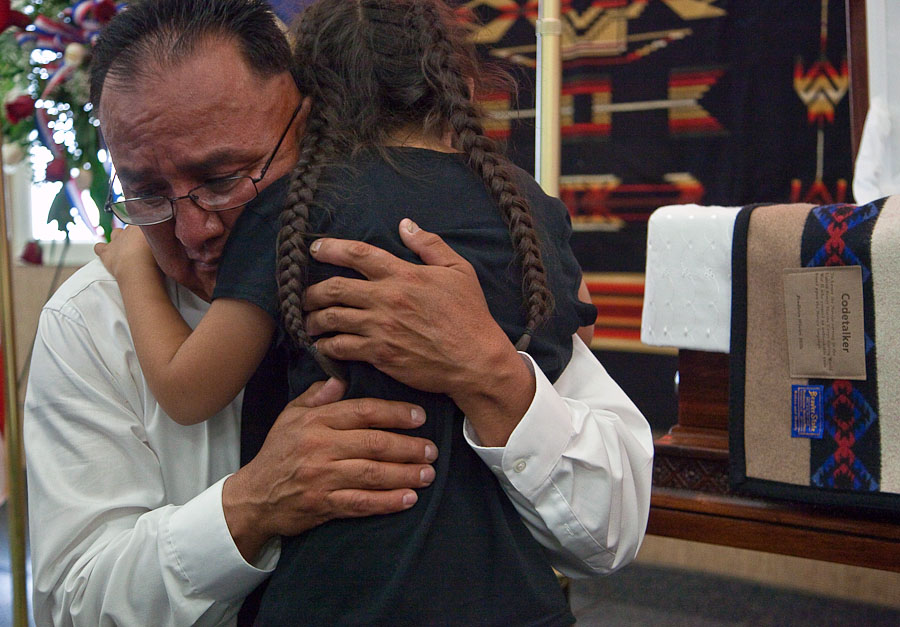
Emerson wraps his arms around his weeping niece, Haily Mae Perry.
One Marine Veteran who could not be present in the flesh to pay his honor and respect was the late Bob Craig, Vincent's father. Yet, if you look closely at the Pendleton blanket draped over the edge of Vincent's coffin, or, better yet, click on this image to see a large version, you will see the words, Codetalker.
This was a special issue Pendleton blanket, done just for the Navajo Codetalkers. Before his coffin would be closed for burial, this blanket, created for his father, would be wrapped around Vincent, so that it encased him and all that he wore.
In this way, Vincent Craig would go to the grave wrapped in the love of his father.
A Boy Scout who came to pay his respects. As I earlier noted, back in our days together, Vincent organized a boy scout troop and I accompanied them camping and hiking.
I took this image about five-and-a-half hours into the viewing. The room had been packed at the beginning and would be packed at the end. The only time the crowd gathered inside thinned out much at all was during the late afternoon meal.
Nephi and Ari.
In the late evening, just before we returned the body of Vincent to the hearse.

